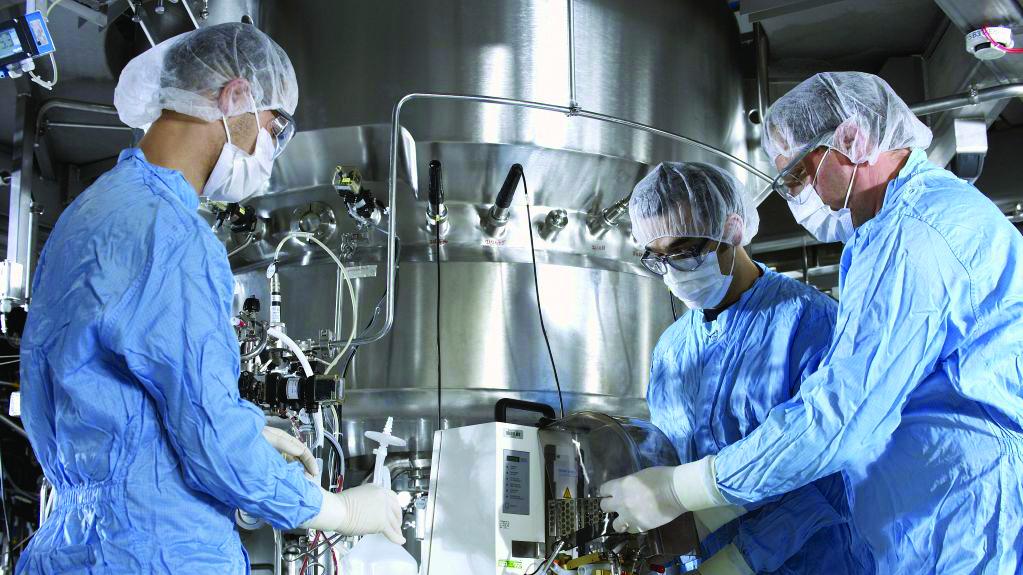 How to minimize five risks to life sciences facilities
How to minimize five risks to life sciences facilities
How to minimize five risks to life sciences facilities
Life Sciences companies face major challenges meeting increasing demand and ensuring regulatory compliance standards, while achieving their cost control goals. Production facilities are closely supervised by national regulators who oblige companies to conform to applicable GMP, (Good Manufacturing Processes). Since GMP procedures involve taking proactive steps to ensure quality and compliance in everything they do, drug manufacturers must accelerate the adoption of innovative technologies to address today’s business challenges and bring transformational changes to the way the lifecycle of medicinal products are managed.
According to the FDA, failures in product or facility quality are the leading cause of disruption to manufacturing –resulting in 66% of all drug shortages. To better understand the risks to production and the environment, facility management requires a proactive approach when developing processes to capture and analyze data. Fortunately, modern digital tools and end-to-end services are available to address the five key risk factors life sciences facilities face.
1.Maintaining environmental conditions
Key to consistent product quality, the ideal internal environment requires flexible HVAC control and monitoring. Failure to do so can impact operations in the following ways:
- Loss of environmental conditions and GMP compliance – Poor HVAC can result in rising quality management interventions, impacting production quality, release dates, and increase recall potential, as well as inhibiting corrective and preventative action measures.
- Increased plant energy use and cost – An inefficient system design or ineffective lifecycle management can impact plant performance and system optimization, as well as significantly increase energy consumption and product affordability.
- Poor visibility for workers – Ineffective building management systems can affect the indoor environment where HVAC is critical to prevent staff exposure to toxic chemicals in safe working conditions.
2. Physical infrastructure failure
Today’s global pharmaceutical companies’ manufacturing processes are highly reliant on effective utility operations and IT infrastructure. Power availability is the highest priority. Utility threats comprise:
- Blackouts and brownouts – Effective backup strategies are needed to ensure critical equipment remains functional and production line operations are maintained.
- Aging infrastructure – Due to a lack of downtime windows, updating aging infrastructure can be high. Balancing criticality and reliability is critical to avoid the risk of catastrophic failure.
- IT interruptions and data integrity – Data continuity is, perhaps, the most important concept in pharmaceutical manufacturing, requiring secure infrastructure and equipment at every production stage.
3. Non-compliance
Regulatory compliance is critical to the Life Sciences industry and is mandated by national governments. Critical areas that cause concern for regulators include:
- Data integrity – Data used to make decisions need to be thorough, complete, and reliable to ensure trust between the regulators, manufacturers, and patients.
- Cybersecurity – Weak defenses offer hackers an opportunity to gain access to key networks, capture intellectual property (IP) data, compromise data integrity, interrupt facility operations, or hold a corporation to ransom. Serious data breaches are common, with cost impacts often running into the millions.
- Regulatory compliance – Obtaining approval to bring medicines to market requires authenticated records for environmental monitoring, document tracking interactions, and sequence of events validation. Applicable records must be readily available for auditing; failing such regulatory audits can ultimately result in a license withdrawal.
4. Responsiveness to operational issues
Agility to respond to incidents and changing requirements is essential for maintaining operational efficiency. What are the main issues that prevent facility agility?
- System complexity – Overly complex systems and heavily loaded communication networks can reduce the operator’s ability to successfully diagnose problems and take effective remedial action.
- Procedural constraints GMP / NON-GMP – Often caused by imposing GMP regulations that are not required, the result can restrict the ability of a flexible and responsive interactive system to adapt. Extensive sign-offs for minor system adaptations or changes can also limit the ability to improve systems.
- Approach to incidents – Complex systems and non-tailored procedures can limit the ability to efficiently resolve incidents that occur in facilities, resulting in long response times to changing environmental conditions and a delay in plant restoration.
5. Operations impacting on sustainability goals
Energy management and sustainability are key business drivers for pharmaceutical companies looking to enhance their brand image and cost management strategies. Threats to sustainability involve:
- Excessive energy consumption – With over 65% of electrical energy being consumed by power facilities, the efficiency of energy consumption is one of the highest risks impacting the cost of production.
- High carbon emissions – Pharmaceutical value chains committed to reducing carbon emissions and footprints are the greatest risks to securing a carbon-neutral future.
- Landfill waste – Landfills cause environmental harm by releasing methane and contributing to the contamination of community water supplies.
- Water consumption and wastewater discharge – If water is managed ineffectively, it can result in major reputational, environmental, and economic impacts.
Schneider Electric EcoStruxure for Life Sciences provides solutions to help you face the increasing pressure to meet the growing demand for stringent regulatory requirements for products whilst driving for operational efficiencies. Download Schneider Electric Next-generation Life Sciences facilities guide to learn about the risks, impacts, and solutions to many of the challenges facing today’s Life Sciences organizations.
























 Advertise
Advertise









